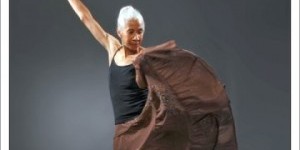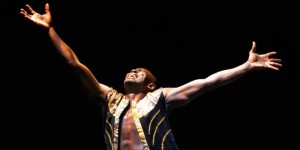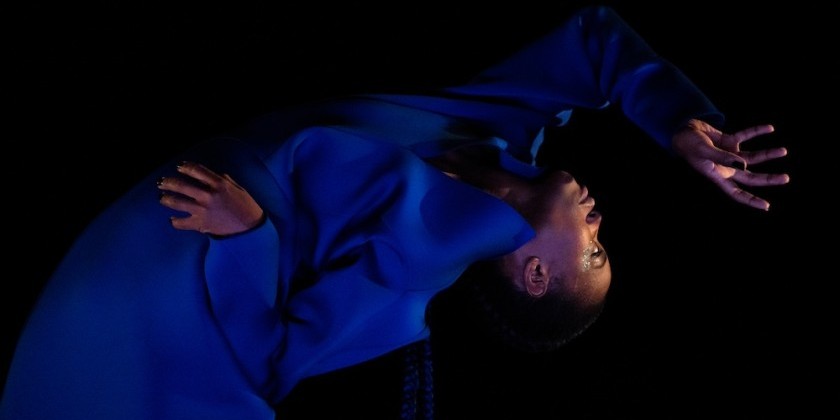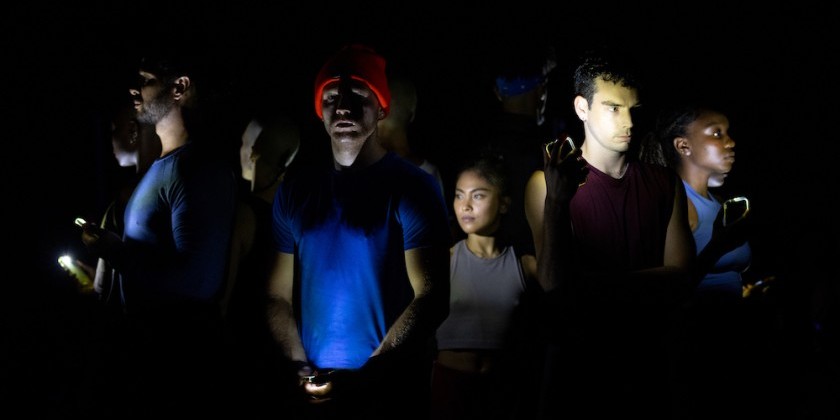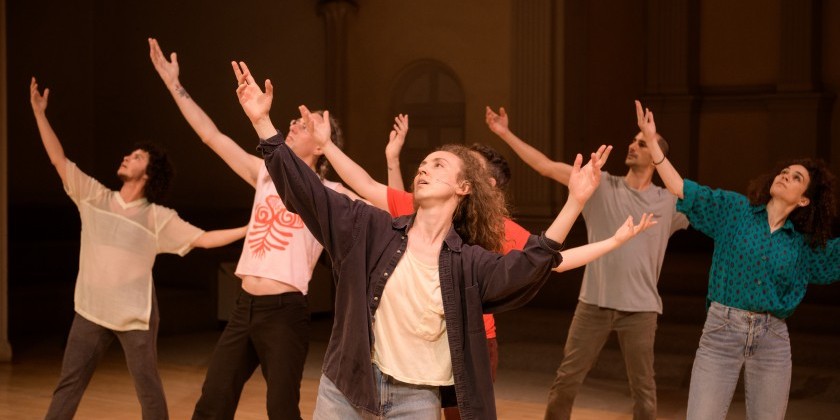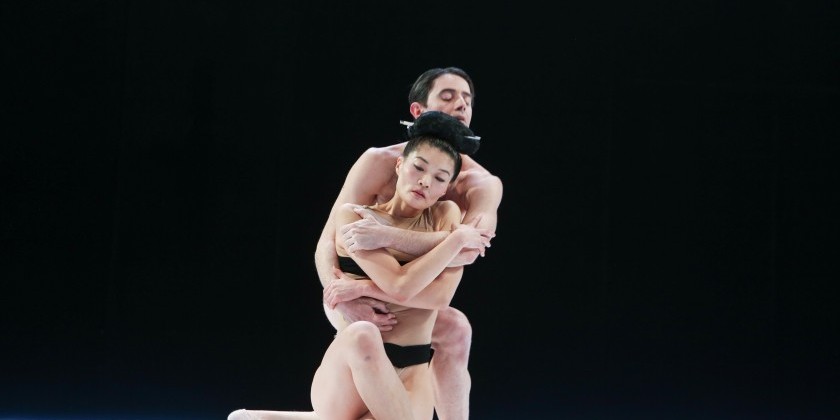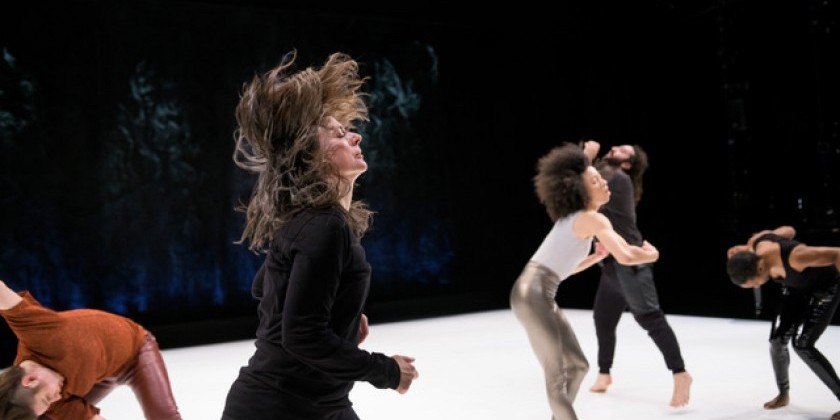Impressions of yMusic with Dianne McIntyre
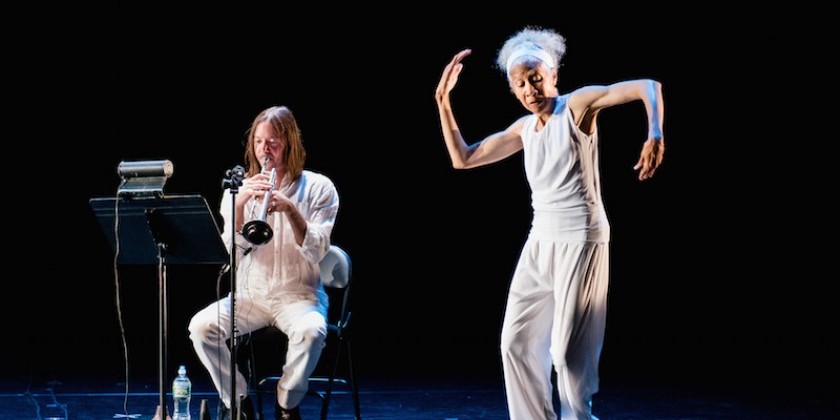
At New York Live Arts
Come Around Part IV: Marcos Balter World Premiere Commission featuring Two World Premiere Solo Dance Commissions by Bill T. Jones and Dianne McIntyre + Repertory
yMusic: Rob Moose (violin), CJ Camerieri (trumpet/french horn), Gabriel Cabezas (cello), Alex Sopp (flute), Hideaki Aomori (clarinet), Nadia Sirota (violin)
Wednesday, December 9-Saturday, December 9-12, 2016 / New York Live Arts Theater
Have you ever taken a moment to notice how musicians can dance? Bodies and instruments flow in and out of sync, sculpting a unique language that informs and inspires one another to create a compelling duet of orchestrated sound. On Saturday, the virtuosic melodies of yMusic — instrumentalists overlapping the worlds of classic and pop — filled New York Live Arts. On December 10th and 12th, during the last piece composed by Marcos Balter, choreographer and performer Dianne McIntyre accompanied yMusic with a solo, while December 9th and 11th featured a solo by choreographer and performer Bill T. Jones.
The sextet enters the stage to generous applause and situates themselves comfortably in an open semicircle of chairs that faces the audience. Music floats instantly from the string trio, flute, clarinet, and trumpet, weaving in and out of sustained notes and syncopated vibrations. The musicians’ bodies move with their rhythms. Feet tap, heads nod, elbows jerk, and torsos sway. Cobalt blue lighting cradles the ensemble, adding a visual accompaniment to their sound. As the violinists swipe their stings, hairs from the bow periodically escape and bounce in the wind until they meticulously pluck them away. yMusic’s sound splashes against our ears and submerges us into anxious anticipation. Some scores coo softly like a lullaby, while others instigate suspense and excitement. Their performance provides a pleasant opportunity for the dancer’s eye to re-see movement through making music.
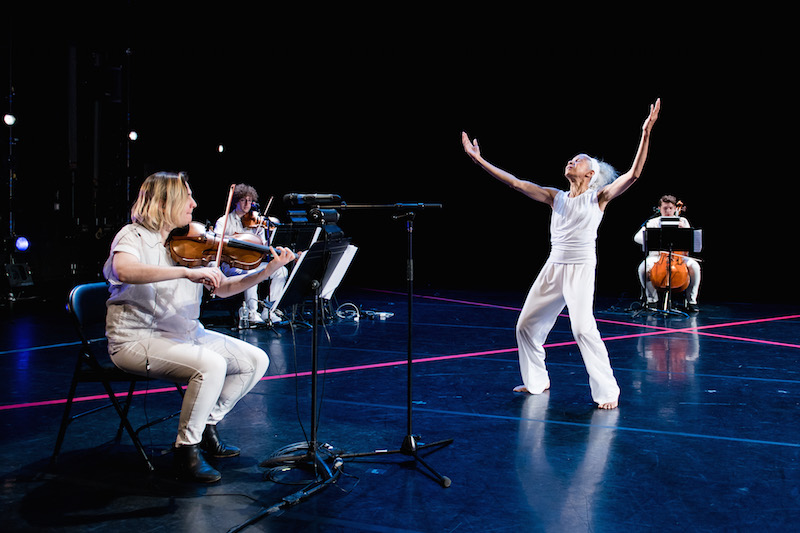
In preparation for McIntyre’s solo, the New York Live Arts-commissioned piece we carry our homes with us which enable us to fly, six spotlights outline an asymmetrical hexagon on the stage. Red tape segments the floor into several quadrants. The white-clad musicians flood the performance area and quickly find their seats. Their formation frames McIntyre who moves in and out of its borders. Her gestures mimic the intensity and specificity of the musicians; she moves delicately — frantic and low as if kneading cotton candy. She takes small, skittering steps across the black marley while the flutist Sopp begins a popcorn round-robin of vocals that moves intermittently from her to Moose, Camerieri, Cabezas, and Sirota, who offer another layer of texture to the vocal tapestry.
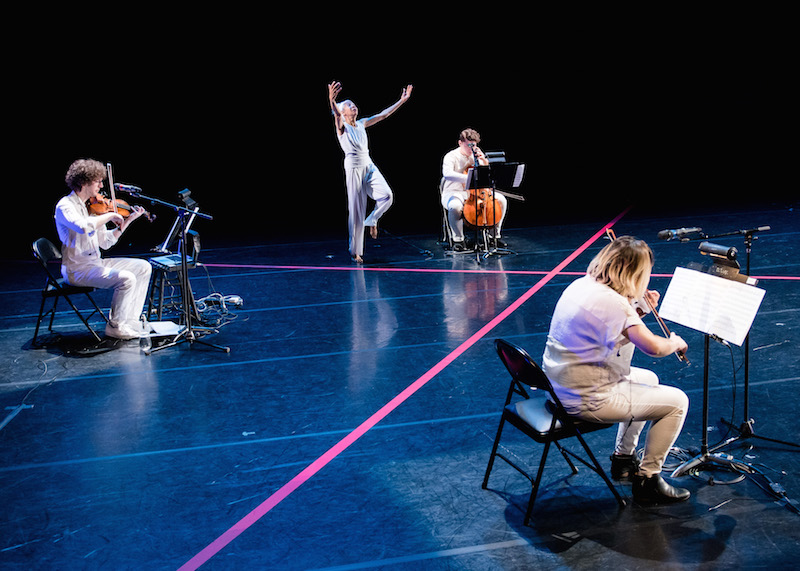
McIntrye is a physical manifestation of sound. She fluctuates between responding to the musicians and floating within her own world. We can only guess where she will go in relationship to the musicians or what draws her there. At one point, the red tape glows like fire, and McIntyre abandons her squiggly pathways to pitter-patter along direct lines. She finds several moments of stillness that delightfully contrast with the movement of the musicians.
If you sought a clear narrative within we carry our homes with us which enable us to fly, you may leave disappointed. It did not appear to be about obvious markers like age, gender, or race. Instead, it reflected presence and intention: sharing space and amplifying sound through moving bodies. As the work resolves, McIntyre leaves us with one last stunning image. She spins in the middle of the frame, and it is the musicians’ moment to be still and silent as the lights fade to black.
Share Your Audience Review. Your Words Are Valuable to Dance.
Are you going to see this show, or have you seen it? Share "your" review here on The Dance Enthusiast. Your words are valuable. They help artists, educate audiences, and support the dance field in general. There is no need to be a professional critic. Just click through to our Audience Review Section and you will have the option to write free-form, or answer our helpful Enthusiast Review Questionnaire, or if you feel creative, even write a haiku review. So join the conversation.






